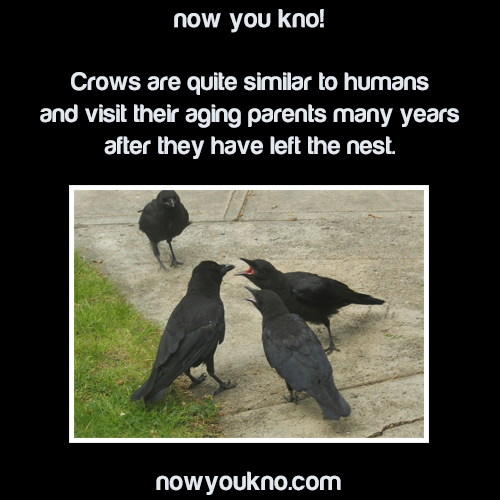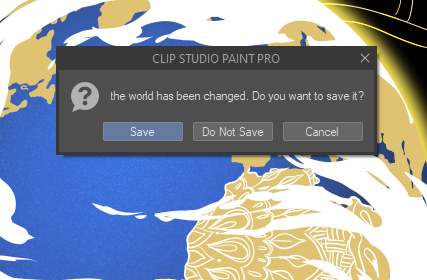"Clothing Tags, Travel Cards, Hotel Room Key Cards, Parcel Labels … A Whole Host Of Components In Supply

"Clothing tags, travel cards, hotel room key cards, parcel labels … a whole host of components in supply chains of everything from cars to clothes. What do they have in common? RFID tags.
Every RFID (Radio Frequency Identification) tag contains a microchip and a tiny metal strip of an antenna. A cool 18bn of these are made – and disposed of – each year. And with demands for product traceability increasing, ironically in part because of concerns for the social and environmental health of the supply chain, that’s set to soar.
And guess where most of these tags end up? Yup, landfill – adding to the burgeoning volumes of e-waste polluting our soils, rivers and skies. It’s a sorry tale, but it’s one in which two young graduates of Imperial College London and Royal College of Art are putting a great big green twist. Under the name of PulpaTronics, Chloe So and Barna Soma Biro reckon they’ve hit on a beguilingly simple sounding solution: make the tags out of paper. No plastic, no chips, no metal strips. Just paper, pure and … simple … ? Well, not quite, as we shall see.
The apparent simplicity is achieved by some pretty cutting-edge technical innovation, aimed at stripping away both the metal antennae and the chips. If you can get rid of those, as Biro explains, you solve the e-waste problem at a stroke. But getting rid of things isn’t the typical approach to technical solutions, he adds. “I read a paper in Nature that set out how humans have a bias for solving problems through addition – by adding something new, rather than removing complexity, even if that’s the best approach.”
And adding stuff to a world already stuffed, as it were, can create more problems than it solves. “So that became one of the guiding principles of PulpaTronics”, he says: stripping things down “to the bare minimum, where they are still functional, but have as low an environmental impact as possible”.
...how did they achieve this magical simplification? The answer lies in lasers: these turn the paper into a conductive material, Biro explains, printing a pattern on the surface that can be ‘read’ by a scanner, rather like a QR code. It sounds like frontier technology, but it works, and PulpaTronics have patents pending to protect it.
The resulting tag comes in two forms: in one, there is still a microchip, so that it can be read by existing scanners of the sort common within retailers, for example. The more advanced version does away with the chip altogether. This will need a different kind of scanner, currently in development, which PulpaTronics envisages issuing licences for others to manufacture.
Crucially, the cost of both versions is significantly cheaper than existing RFID kit – making this a highly viable proposition. Then there are the carbon savings: up to 70% for the chipless version – so a no-brainer from a sustainability viewpoint too. All the same, industry interest was slow to start with but when PulpaTronics won a coveted Dezeen magazine award in late 2023, it snowballed, says So. Big brands such as UPS, DHL, Marks & Spencer and Decathlon came calling. “We were just bombarded.” Brands were fascinated by the innovation, she says, but even more by the price point, “because, like any business, they knew that green products can’t come with a premium”."
-via Positive.News, April 29, 2024
--
Note: I know it's still in the very early stages, but this is such a relief to see in the context of the environmental and human rights bullshit associated with lithium mining, and the way that EVs and other green infrastructure are massively increasing the demand for rare metals.
I'll take a future with paper-based, more humane alternatives for sure! Fingers crossed this keeps developing and develops well (and quickly).
More Posts from Wolfspoot and Others
the commodification of friendship is the most annoying thing to come out of the internet in ages. like actually i love to break this to you but you're supposed to help your friends move even if it's hard work. or stay up with them when they're sad even if you're gonna lose sleep. you're supposed to listen to their fears and sorrows even if it means your own mind takes on a little bit of that weight. that's how you know that you care. they will drive you to the airport and then you will make them soup when they're sick. you're supposed to make small sacrifices for them and they are supposed to do that for you. and there's actually gonna be rough patches for both of you where the balance will be uneven and you will still be friends and it will not be unhealthy and they will not be abusive. life is not meant to be an endless prioritization of our own comfort if it was we would literally never get anywhere ever. jesus.
‘While bats can only sense the outer shapes and textures of their targets, dolphins can peer inside theirs. If a dolphin echolocates on you, it will perceive your lungs and your skeleton. It can likely sense shrapnel in war veterans and fetuses in pregnant women. It can pick out the air-filled swim bladders that allow fish, their main prey, to control their buoyancy.
It can almost certainly tell different species apart based on the shape of those air bladders. And it can tell if a fish has something weird inside it, like a metal hook. In Hawaii, false killer whales often pluck tuna off fishing lines, and “they’ll know where the hook is inside that fish,” Aude Pacini, who studies these animals, tells me. “They can ‘see’ things that you and I would never consider unless we had an X-ray machine or an MRI scanner.”
This penetrating perception is so unusual that scientists have barely begun to consider its implications. The beaked whales, for example, are odontocetes that look dolphin-esque on the outside—but on the inside, their skulls bear a strange assortment of crests, ridges, and bumps, many of which are only found in males.
Pavel Gol’din has suggested that these structures might be the equivalent of deer antlers—showy ornaments that are used to attract mates. Such ornaments would normally protrude from the body in a visible and conspicuous way, but that’s unnecessary for animals that are living medical scanners.’
-Ed Yong, An Immense World
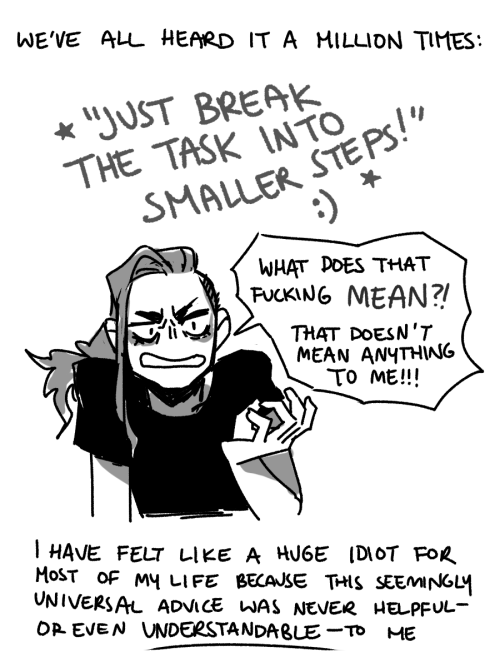
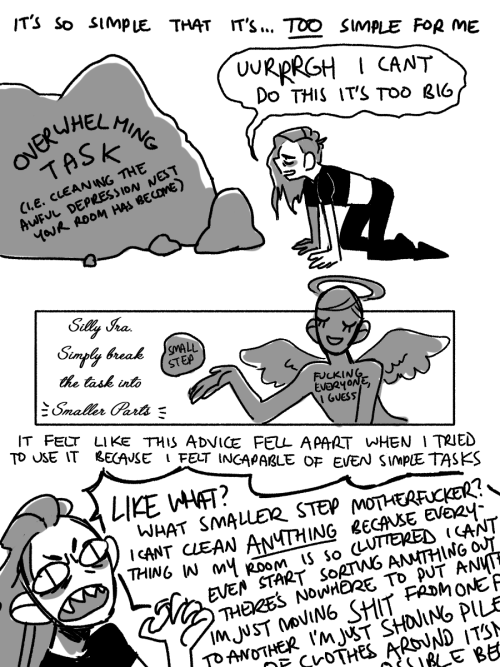
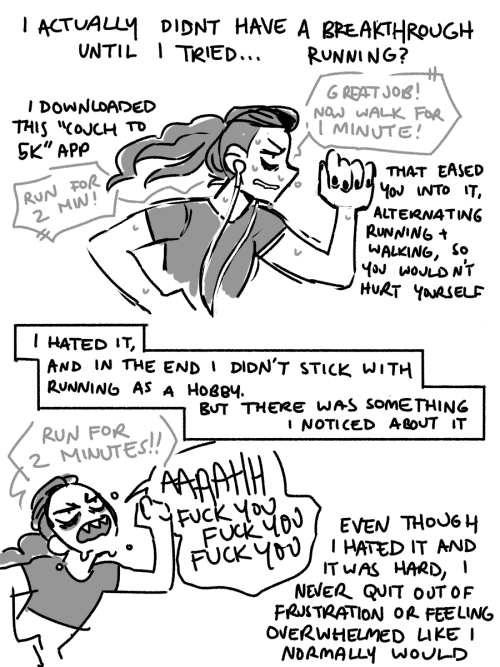
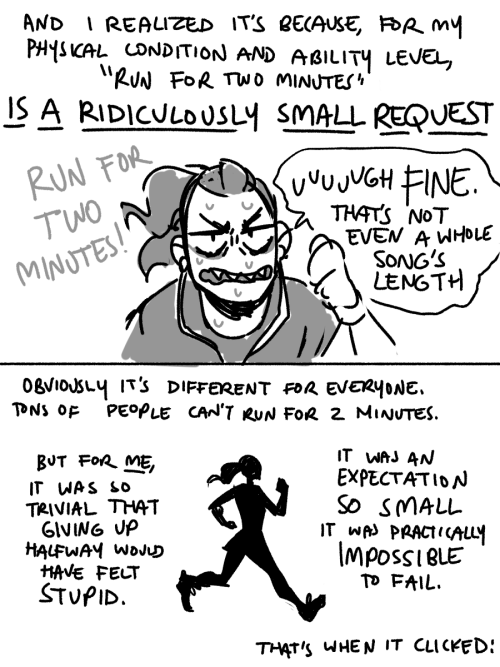
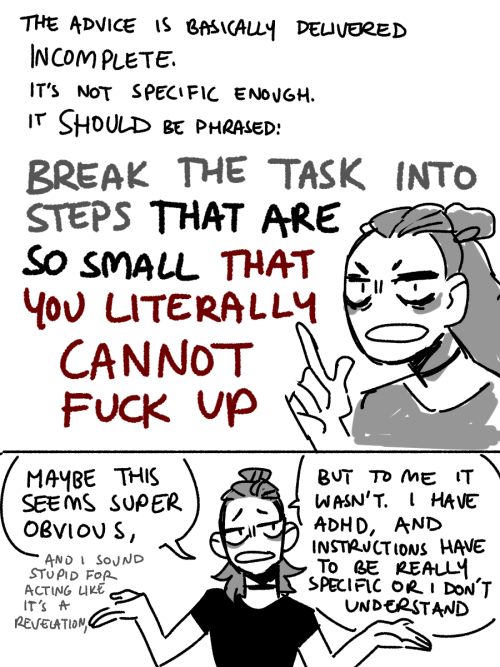
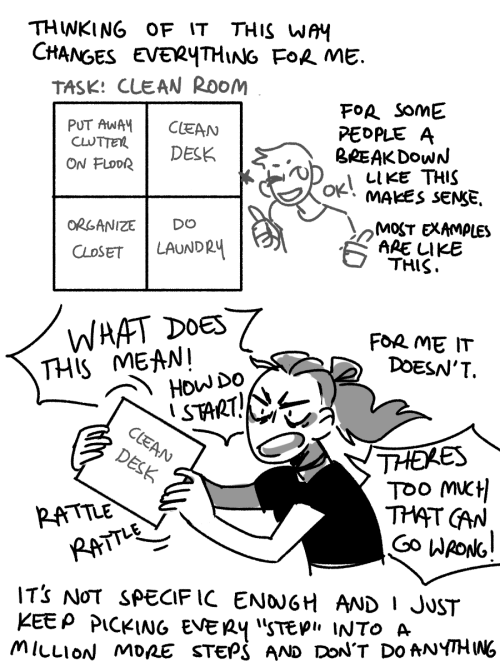
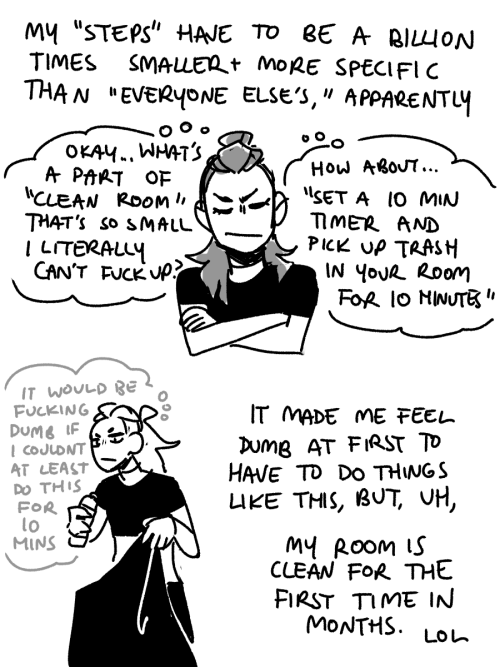
weird little brain tweak/reframing that helped me out. i Often find that advice that seemingly helps Everyone Else doesn’t make any sense to me, in ways that are hard to describe, and it can be really frustrating. but when i find a way to explain it to myself that finally seems to break through and make it click, it feels really good
I’m sorry friends, but “just google it” is no longer viable advice. What are we even telling people to do anymore, go try to google useful info and the first three pages are just ads for products that might be the exact opposite of what the person is trying to find but The Algorithm thinks the words are related enough? And if it’s not ads it’s just sponsored websites filled with listicles, just pages and pages of “TOP FIFTEEN [thing you googled] IMAGINED AS DISNEY PRINCESSES” like… what are we even doing anymore, google? I can no longer use you as shorthand for people doing real and actual helpful research on their own.
-
 xcziel reblogged this · 7 months ago
xcziel reblogged this · 7 months ago -
 lornrocks liked this · 7 months ago
lornrocks liked this · 7 months ago -
 arojerk reblogged this · 7 months ago
arojerk reblogged this · 7 months ago -
 woundliqour liked this · 7 months ago
woundliqour liked this · 7 months ago -
 awfulatlife reblogged this · 7 months ago
awfulatlife reblogged this · 7 months ago -
 talkingtrashcan reblogged this · 7 months ago
talkingtrashcan reblogged this · 7 months ago -
 talkingtrashcan liked this · 7 months ago
talkingtrashcan liked this · 7 months ago -
 w00dchips reblogged this · 7 months ago
w00dchips reblogged this · 7 months ago -
 magpieswagpie liked this · 7 months ago
magpieswagpie liked this · 7 months ago -
 thesplendidsnout reblogged this · 7 months ago
thesplendidsnout reblogged this · 7 months ago -
 jfictitional reblogged this · 7 months ago
jfictitional reblogged this · 7 months ago -
 panda-poes reblogged this · 7 months ago
panda-poes reblogged this · 7 months ago -
 psychologeek liked this · 7 months ago
psychologeek liked this · 7 months ago -
 jauntylittlefrillyboy liked this · 7 months ago
jauntylittlefrillyboy liked this · 7 months ago -
 juniperharvest reblogged this · 7 months ago
juniperharvest reblogged this · 7 months ago -
 capshino liked this · 7 months ago
capshino liked this · 7 months ago -
 neural-entropy reblogged this · 7 months ago
neural-entropy reblogged this · 7 months ago -
 evhrin reblogged this · 7 months ago
evhrin reblogged this · 7 months ago -
 evhrin liked this · 7 months ago
evhrin liked this · 7 months ago -
 princeofsparkles liked this · 7 months ago
princeofsparkles liked this · 7 months ago -
 slow-motion-shadow liked this · 7 months ago
slow-motion-shadow liked this · 7 months ago -
 ritterssport liked this · 7 months ago
ritterssport liked this · 7 months ago -
 saxifraga-x-urbium reblogged this · 7 months ago
saxifraga-x-urbium reblogged this · 7 months ago -
 themarvelhorse reblogged this · 7 months ago
themarvelhorse reblogged this · 7 months ago -
 themarvelhorse liked this · 7 months ago
themarvelhorse liked this · 7 months ago -
 scoutfromzion reblogged this · 7 months ago
scoutfromzion reblogged this · 7 months ago -
 cuyahoga-balls liked this · 7 months ago
cuyahoga-balls liked this · 7 months ago -
 megalunalexi-aesthetic reblogged this · 7 months ago
megalunalexi-aesthetic reblogged this · 7 months ago -
 megalunalexi-aesthetic liked this · 7 months ago
megalunalexi-aesthetic liked this · 7 months ago -
 burnedhoney reblogged this · 7 months ago
burnedhoney reblogged this · 7 months ago -
 jfictitional liked this · 7 months ago
jfictitional liked this · 7 months ago -
 burnedhoney liked this · 7 months ago
burnedhoney liked this · 7 months ago -
 garnetgh0st reblogged this · 7 months ago
garnetgh0st reblogged this · 7 months ago -
 garnetgh0st liked this · 7 months ago
garnetgh0st liked this · 7 months ago -
 nonjuxtaposed reblogged this · 7 months ago
nonjuxtaposed reblogged this · 7 months ago -
 nonjuxtaposed liked this · 7 months ago
nonjuxtaposed liked this · 7 months ago -
 kaosvrow liked this · 7 months ago
kaosvrow liked this · 7 months ago -
 kazzle-dazzle-em liked this · 7 months ago
kazzle-dazzle-em liked this · 7 months ago -
 movingthecat liked this · 7 months ago
movingthecat liked this · 7 months ago -
 trash-panda-boi reblogged this · 7 months ago
trash-panda-boi reblogged this · 7 months ago -
 trash-panda-boi liked this · 7 months ago
trash-panda-boi liked this · 7 months ago -
 justatumblinweed reblogged this · 7 months ago
justatumblinweed reblogged this · 7 months ago -
 justatumblinweed liked this · 7 months ago
justatumblinweed liked this · 7 months ago -
 azaraih liked this · 7 months ago
azaraih liked this · 7 months ago -
 pastpassages liked this · 7 months ago
pastpassages liked this · 7 months ago -
 eyebagtree liked this · 7 months ago
eyebagtree liked this · 7 months ago -
 wachinyeya reblogged this · 7 months ago
wachinyeya reblogged this · 7 months ago
I’m a young-adult woman with the hopes of becoming a well-known writer. I’m a dreamer, a music lover and a chaotic human being, curious about what the future will bring but without any idea of what to do with it. As for this tumblr, we’ll see. I will make an attempt to make an interesting place but for now I still have to figure out what to do with it.
167 posts





